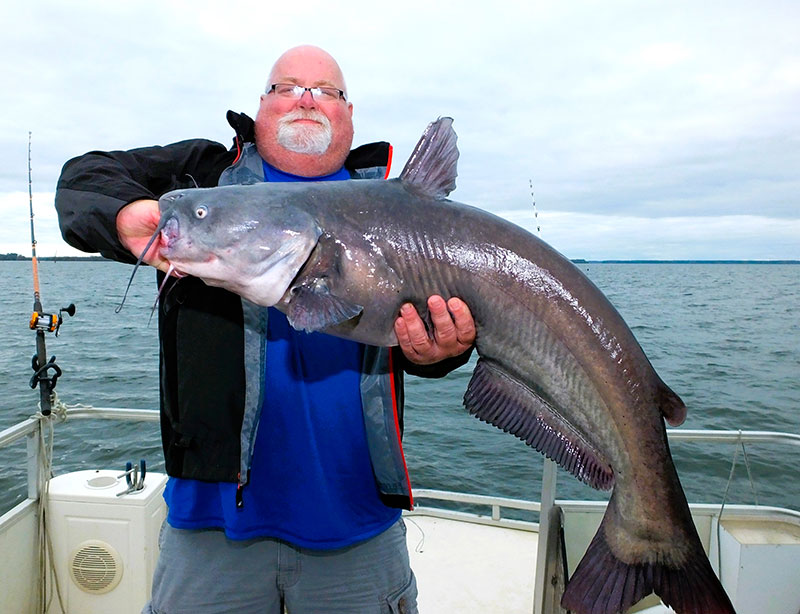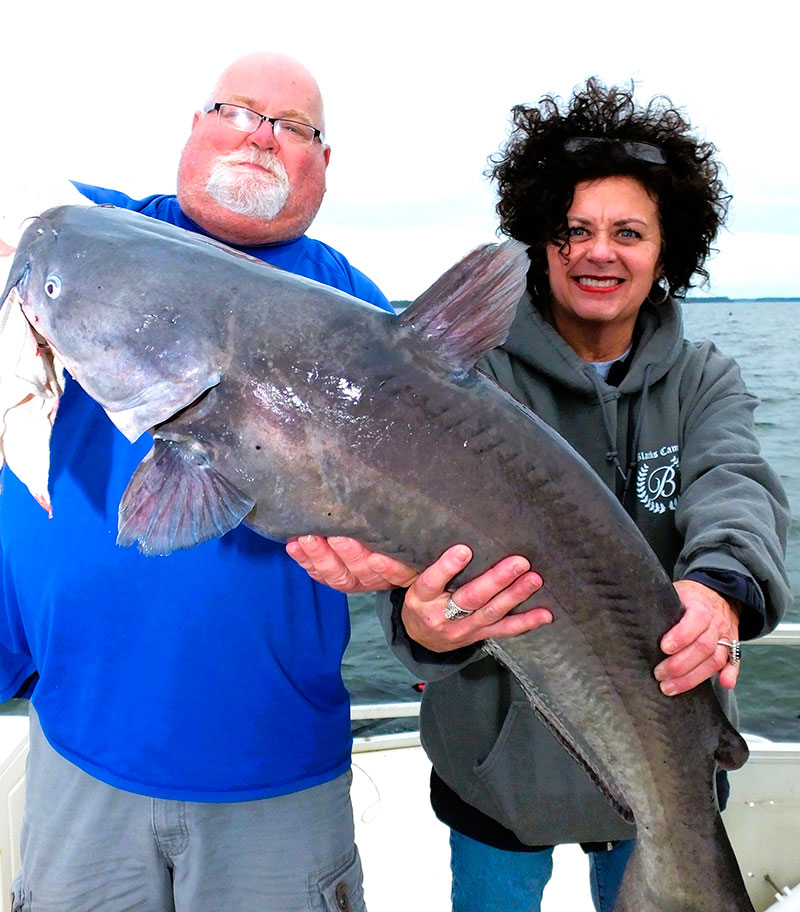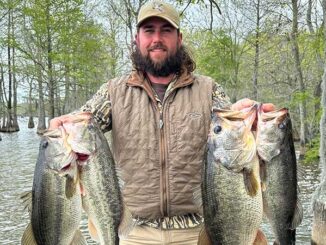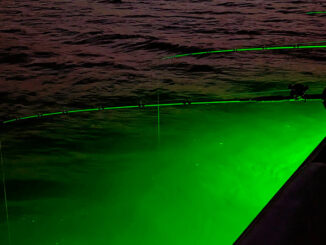
November offers Santee Cooper anglers a prime opportunity to catch big catfish throughout lakes Marion and Moultrie. The action primarily targets big blue catfish, but quality flatheads are also biting.
Cats on the Prowl
November is right in the middle of a prime 3-month stretch for hooking huge catfish. And catfish guide Capt. Eric Sellers makes the most of this opportunity.
“It’s an ideal time to hook big catfish in either lake,” Sellers said. “I fish both lakes and the deciding factor is wind speed and direction, and recent success patterns. But both produce trophy catfish.”
Sellers grew up learning how to fish from family members who were catfish guides at Santee Cooper. His dad Gene was a professional guide, and his uncle, “Big John” Sellers, earned legendary-status with his catfishing success.
“I grew up fishing these lakes, literally with professional catfishermen,” Sellers said. “It’s served me well, and over the years I’ve taken their tactics and modified them to fit my personal style, along with advances in sonar use and capability.”
Sellers’ wife Shannon also works as his first-mate on guide trips. And she loves to help first-time catfisherman catch big fish.
“Catfishing is a family thing,” she said. “I love catfishing with Eric and clients.”
Sellers said finding catfish right now is all about forage. And plenty of it is available this month.
“Catfish are going to be around food and they’re going to eat,” he said. “My job is to find that food source, be it shad, mussels or something else, and present bait in such a way they can’t refuse it,” he said.
Drift along
Sellers will drift or anchor fish, depending on specific fishing patterns. But for November and December, his “go-to” tactic is drift fishing.
“I generally stay on the move and cover plenty of water because specific hotspots vary even within a generally productive area,” he said. “We can be in the right area but miss the largest concentrations of catfish if I limit my fishing to just anchoring. When I find that small specific target, I’ll anchor.”
Sellers fishes out of Blacks Camp and said drifting enables him to cover specific areas, not just large areas. It’s not a random, hope-to-get-lucky style of fishing.
“It’s never a random drift, I’m always fishing where I’m marking forage and seeing big fish arches on the graph,” he said. “These places are associated with changes in water depth and the bottom topography changes. I’ll target points, humps, ledges, and deep holes. Some patterns hold for multiple days. But with a frontal passage, we may see a definite change in depths and productive areas overnight.”
Sellers said clear skies, vs. cloudy days, impact the productive depth.
“Bright days tend to push fish deeper. These days are associated with post-frontal conditions that also tend to move catfish deeper,” he said. “Cloudy days are often the days prior to a front, and sometimes bring slightly warmer weather. And the less intense light is conducive to a shallower fish bite.”
Pay Attention
Sellers watches his graph intently, focused on finding suspended forage and fish marks hovering slightly off the bottom.
 “I love to see forage pods flared in irregular shapes. That’s often a sign that fish are actively feeding in that spot,” he said.
“I love to see forage pods flared in irregular shapes. That’s often a sign that fish are actively feeding in that spot,” he said.
When he hooks fish, Capt. Sellers mentally marks the depth to help him determine the pattern of the day.
“Also, when we hook a fish, it’s not where the boat is that counts. It’s where the bait we’re drifting is located,” he said. “By watching the graph, I often see what I believe are big catfish marked. Then 30 seconds, or a minute later depending on drift speed, we hook a fish when the bait reaches that spot.
“Coincidence?” he said. “I think not. Paying attention to that type of information on the graph helps me understand what to search for. And it helps me find, and stay on, fish. Just as importantly, that also clues me when to move, or re-drift a hotspot, when I don’t see fish indicators.”
Sellers said bait is crucial and he’ll typically use whole or cut blueback herring, gizzard shad, and white perch as his three basic baits. He employs the standard Santee drift rig and drifts water ranging from 15 to 45 feet deep.
He said blues dominate the catch, but he catches big flatheads too, along with plenty of eating-sized catfish throughout this month.
Take your pick:
Blue catfish make up the bulk of the catch for anglers drifting at Santee this month. But anglers also catch their share of flatheads. And they catch a mix of eating-sized cats and fish that reach trophy status.





Be the first to comment